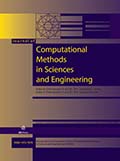Authors: Jiang, Wenbo | Zhang, Yuan
Article Type:
Research Article
Abstract:
In an era marked by rapid globalisation and digitalisation, the realms of education and technology are increasingly intersecting, particularly within the sphere of environmental design education. This study ventures into the integration of internet technology with environmental design pedagogy, emphasizing the development of a cross-disciplinary curriculum and a nuanced evaluation of its educational impact. Traditional research methodologies predominantly focus on short-term outcomes, often neglecting the longitudinal growth and deeper experiences of learners. Addressing this oversight, our research introduces an innovative curriculum system founded on knowledge graph techniques, aiming to enrich the educational content. The application of knowledge graph technology in
…curriculum development is primarily manifested through the structured representation of course content, academic knowledge points, and their interconnections. By constructing knowledge graphs, educators are enabled to clearly identify the links and intersections between different academic fields, facilitating curriculum design that extends beyond the imparting of knowledge within singular disciplines to an integration of resources across subjects. This approach promotes the comprehensive application of knowledge and the cultivation of innovative capabilities. Alongside this, we employ a time series analysis for a more dynamic and detailed assessment of teaching effectiveness. This not only provides an academic benchmark but also charts a new course, offering actionable insights for educators in the field. Through this study, we aspire to bridge the gap between technology and environmental design education, ensuring a comprehensive and future-ready learning environment for students. In the context of environmental design education, the intrinsic connections between design principles, sustainability, and user experience are revealed through knowledge graphs. Within this framework, students are empowered to explore the application of these concepts in practical design projects. For instance, it becomes apparent that enhancing the user experience of a public space necessitates consideration of aesthetics, functionality, and environmental sustainability factors. Through this methodology, the use of knowledge graph technology not only enhances the coherence and systematic nature of course content but also fosters students’ creative thinking and problem-solving abilities, further driving the integration and innovation of education.
Show more
Keywords: Internet technology, environmental design, cross-disciplinary curriculum, knowledge graph, time series analysis, teaching effect evaluation
DOI: 10.3233/JCM-247473
Citation: Journal of Computational Methods in Sciences and Engineering,
vol. 24, no. 4-5, pp. 2485-2501, 2024
Price: EUR 27.50





